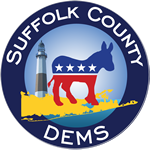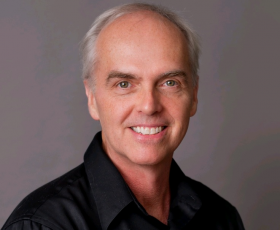Too many of our children are dying from opioids. As the father of a young man who died from chronic heroin and cocaine use, I have come to learn that we can do better. Albany should be leading the way for the nation in ending the negative public perceptions of people with substance use disorder. Long Island should be getting its fair share of resources instead of contributing so much more than it gets back. We need Medication-assisted treatment (MAT) for opioid dependency, including well-managed prescribing of Naltrexone and Buprenorphine, evidence-based treatments that saves lives. We should remove barriers to these life-saving treatments and get opioid users into effective treatment in New York State:
1) Our state should provide a full and public assessment of the reality of opioid use disorder (OUD) treatment in New York. Our experience is that the data and information about OUD treatment outcomes made available to the public by the state’s Office of Alcoholism and Substance Abuse Services (OASAS) are limited. Nonetheless, it is clear that: a) The majority of OUD treatment recipients in the state are not treated with evidence-based approaches (that is, MAT), and b) The clear majority of recipients of non-MAT OUD treatment quickly relapse. Until there is a public reckoning with this reality, and a way of measuring the performance of the state’s treatment system going forward, a damaging myth will remain ervasive: that recipients of abstinence-based OUD treatment relapse not because of any fault with the treatment, but simply because they were not “ready” for it.
2) Our state leaders should help educate the public about MAT and eradicate the negative public perception surrounding it. If we don’t opioid users won’t get the treatment that will save their lives. Decades after the start of the HIV/AIDS epidemic, all of us now condemn how long it took for leaders of that era to confront the anti-gay stigma which prevented a vigorous public health response. On opioids, and the stigma around addiction and MAT, public leaders have been even slower to act. Our children will look back at back at today’s epidemic and see which public officials challenged the stigma around opioid addiction and MAT -- and which ones chose to leave it alone.
3) The state should invest in professional development. MAT is vastly underutilized in New York partly because medical and treatment professionals at all levels are undertrained. Training and ongoing education is needed among doctors, nurses, social workers, counselors, corrections officers, probation officers, parole officers, judges and others.
4) The Health Department, not OASAS, should take the lead. The top medical leadership of New York State should be in the forefront of educating doctors, mobilizing hospitals and healthcare providers, and marshalling the resources needed to tackle this public health crisis. Everyone now recognizes -- at least rhetorically -- that OUD is a disease. Acting on this belief means that our medical and healthcare institutions should not be allowed to view this crisis as someone else’s
responsibility; DOH is far better equipped to communicate this message than OASAS.
Several states have developed innovative approaches to creating a stronger infrastructure for MAT and are reducing opioid overdose death rates as a result. New York is not yet among them -- but the Empire State should be the leader. With more than 400 lives ended by opioids in 2016, my son among them, I call upon the NYS Assembly, Senate, and Governor to support meaningful initiatives in this area to help end this crisis.
Dave Morrissey is a Long Island native, a software engineer, project manager, husband, and father of two boys. Dave’s wife, Terri, is a theater arts teacher in Port Jefferson. His oldest son, Will, died from chronic use of heroin and cocaine as of December, 2016. His younger son, Dave Junior, is an actor and producer living in NYC.
Bio:
- I’ve lived on Long Island's North Shore all my life, and I’ve lived in Smithtown for the last ten years with my wife Terri. We were married in 1983 and have two boys. David Jr. is an actor and producer living in Brooklyn. William, our first born is in heaven now from chronic use of heroin.
- I am a software engineer (38 years) with a master’s degree in Business Administration (MBA), and a certified Project Management Professional.
- I am a "Person in Recovery" (est. 1980).
- And I am the father of an addict who passed away in 2016 due to the opioid crisis. Since William left us, I have advocated for the recovery movement.
Issues:
The data is trending in the wrong direction when it comes to substance use disorder, especially addiction to opioids.
- Our current policies and practices still result in doubling every ten years in the death rates from overdose. Opiate addiction kills an estimated 75,000 a year now, and in ten years left unchecked it will be 150,000 nationally.
- Substance related mortality is on the increase.
- Cigarette addiction is still steadily killing almost half a million people a year.
- Probably a million a year are dying of addiction and substance-related deaths, more than other causes.
Addiction costs society in many ways…
- revolving door rehabs exhaust insurance company funds
- out-of-state rehabs have little regulation
- incarceration
- traffic fatalities
- Death from substance abuse is under-reported
- A lost generation that outnumbers the AIDS epidemic in its entirety.
- Lost productivity of workers who are worried about their family member suffering from
substance use disorder.
- Families that suffer like this feel lost and ostracized.
As the father of a young man who died from chronic use of heroin and cocaine, I believe that we be ready for the rare opportunities that come when a person has a moment of clarity that their lives are unmanageable, and are desperate for help. When they are ready, we too need to be ready, to offer them life-saving treatment-on-demand.
Here is what I think will help:
- More recovery services
o Recovery High schools on Long Island, geared to help students in recovery.
o More THRIVE centers and peer-to-peer counseling.
o Job re-training services for those in recovery, especially training in addiction counseling, social work, and related support fields. Often the best counselors are people in recovery.
o Incentivize employers to hire people in recovery.
- Treatment services
o Sherpas guides (recovery coaches) in every ER
o Medially Assisted Treatment (MAT) on demand, including Naltrexone and Buprenorphine.
o More quality treatment centers in New York State. (Too many times people go out of state, where they have little regulation.)
- Education
o Teachers and families need support for k-12 evidence based awareness and peer to peer practices, and prevention techniques.
o We need addiction counselors in every school, to help guide those seeking or in need of recovery.
o Doctors and psychiatrists need more education on effective, evidence-based harm reduction, treatment, and prevention techniques.
o We need to end the negative public perceptions about substance use disorder. It is a disease, not a choice. If we don’t think that way, allows medical services won’t get to the people who need them. They deserve help, the same as any other disease.
- Regulatory changes
o We need insurance to fund treatment-on-demand.
o We need to make it less difficult for doctors to prescribe life-saving MAT (Medically Assisted Treatment) drugs. Currently it is easier to prescribe Oxycontin.
o Mental health parity laws need to be enforced.
o Government watchdogs that are supposed to be guarding against addiction have been rendered toothless by Big Pharma’s lobbyists. This needs to stop.
o Courts need to stop jailing addicts who should be in treatment.
o We need to shift money from prisons to treatment centers and sober living arrangements,
o We need to create sober high schools.
o We need to learn from Virginia and France and Portugal, which all have dramatically reduced death rates from addiction
o We need to give prescription drug enforcement powers back to the Drug Enforcement Agency (DEA)
o Create a superfund to clean up the toxic mess left by Big Pharma
Benefits of improved mental health sand related services…
- One dollar invested in this way returns seven to society.
- Helps the environment
- Improves the general quality of healthcare when we include mental health issues.
- growing quality jobs...
- Most of the 38,000 gun deaths last year were from suicide. Improved mental health treatment will reduce gun deaths.
We need to continue building on the successes with these other issues too …
- We need to prepare for a future where our elderly will be living longer. We need to keep their minds healthy, not just their bodies.
- We need single payer health insurance – Medicare for all – while allowing people to purchase add-on insurance.
Every other disease in medicine is on the decline except addiction. Substance Use Disorder requires dramatically better treatment, which in turn requires extra investment in specialized training and hiring of workers to support a recovery infrastructure. Policy shifts are needed to do this. Private practices need to adapt. This is a paradigm shift we must make now. Fixing this issue will benefit everyone, and bring us to a place where we can work to improve the rest of healthcare, the environment, the job market, and the world.
Thanks in advance for your help.
Best regards,
Dave Morrissey
127 East Main St, Ste 206
Smithtown, NY 11787
631-258-8292
Fb.me/DaveMorrisseyforAssembly
http://smithtowndems.com/candidate/dave-morrissey
http://facebook.com/dave.morrissey.39
https://www.linkedin.com/in/davidjmorrissey/
@DavidJMorrissey

